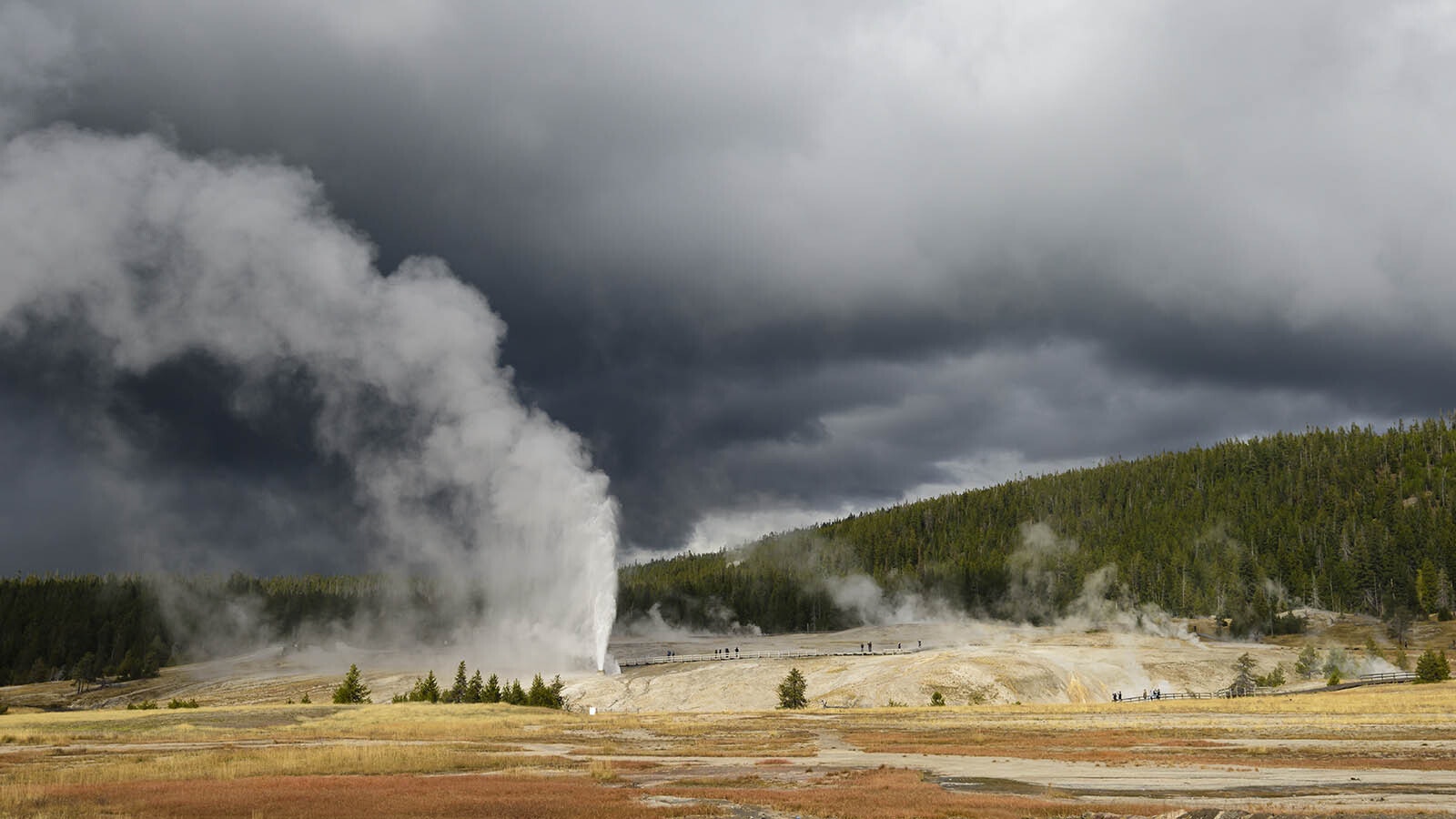What do vulcanologists say about Yellowstone being one of the world’s largest supervolcanoes? For a start, they’d say it's silly.
Anytime there’s a rumble in Yellowstone National Park, the world holds its breath while scientists shake their heads and doomsday conspiracy theorists proclaim humanity is about to be obliterated.
The reality is, there are plenty of super things to study in the park, but saying Yellowstone sits atop a smoldering “supervolcano” is a bit superfluous.
“I don't like the term,” Mike Poland, scientist in charge of the Yellowstone Volcano Observatory, told Wendy Corr on Cowboy State Daily's The Roundup podcast. “I’ve got three reasons.”
It’s Outrageous
Poland believes calling Yellowstone a “supervolcano” is a bit ridiculous, likening it to another dated, overused and often inaccurate descriptor from the 1990s — uber.
“Everyone was saying ‘uber this,’ and ‘uber that,’ before Uber was a mode of transportation,” he said.
The German word “über” translates to “over” or “above.” In English, the word’s meaning has been co-opted as an adjective meaning something is particularly extreme.
Poland isn’t sure when “supervolcano” became synonymous with Yellowstone, and said he realized the inherent absurdity in it when asked about similar designations for other volcanoes.
“I've had people ask me, ‘Well, if Yellowstone was a supervolcano, is there such a thing as a ‘mega-volcano’ or a ‘hyper-volcano?’” he said. “It’s just a silly made-up word. So, I think it's kind of trite.”
Misapplied
Hyper-volcano and mega-volcano might be made-up, but supervolcano is a recognized scientific term. Yellowstone is in that elite club, but Poland believes becoming a member of the club is too easy.
The Yellowstone Volcano Observatory’s defines a supervolcano as “a volcano that at one point in time erupted more than 1,000 cubic kilometers of deposits.” That’s categorized as a magnitude 8.0 on the Volcano Explosivity Index, a real system for categorizing volcanic eruptions.
“That's about 1,000 times the size of the Mount St. Helens 1980 eruption,” Poland said. “Tremendous, mind-bogglingly big eruptions. But I see that term applied to volcanoes that have never had an eruption that big.”
Poland cited the Italian volcano Campi Flegrei as an example. That volcano is part of a 125-mile-wide region called the Phlegraean Fields, created by a VEI 7.0 eruption around 2 million years ago. The infamous Mount Vesuvius, which devastated the Roman city Pompeii in 79 A.D., is in the same region.
Because of its massive VEI 7.0 eruption, Campi Flegrei is often labeled a supervolcano. But based on the accepted definition, Poland said it’s technically never qualified.
“It is a similar style to Yellowstone,” he said. “It's this big caldera system that’s had large eruptions in the past, but never one that would qualify as a super eruption. So how can it be a supervolcano if it never had a super eruption?”
There’s always the possibility Campi Flegrei could have a VEI 8.0 eruption and earn the rightful title of a supervolcano. However, there’s no indication it will.
Misleading
When a supervolcano erupts, its impact will most likely cause global devastation and end humanity as we know it, right?
That’s Poland’s third reason why he dislikes calling Yellowstone a supervolcano. Whether intentional or not, it suggests that when a tremendously large volcano erupts, it’s all or nothing for the human race.
“It implies that these volcanoes only have really big explosions, when in fact the far more common type of activity are smaller lava flows,” he said. “Yellowstone's had a couple dozen lava flows since the last big explosion. That’s the way these volcanoes mostly behave.”
The last major eruption of Yellowstone was roughly 640,000 years ago. That’s when it earned the supervolcano designation, as its eruption was a VEI magnitude 8.0.
Meanwhile, the last eruption of Yellowstone was a “large volume lava flow” around 70,000 years ago. There were no dramatic explosions, and the lava moved less fluidly than an old bottle of Liquid Plumber.
Supernational Park?
Part of Yellowstone’s allure, for vulcanologists and other scientists, is its dynamic behavior and the constant changes they can observe. One enormous eruption is a bit boring by their standards.
For Poland, calling Yellowstone a supervolcano is essentially the same as calling Yellowstone a supernational park. It might sound impressive, but it doesn’t mean much of anything.
“I just think the term does a disservice to the geology,” Poland said. “You don't have to make Yellowstone more spectacular than it is. No matter how you slice it, it's an amazing place. You don't have to put super in front of it.”
Andrew Rossi can be reached at arossi@cowboystatedaily.com.







